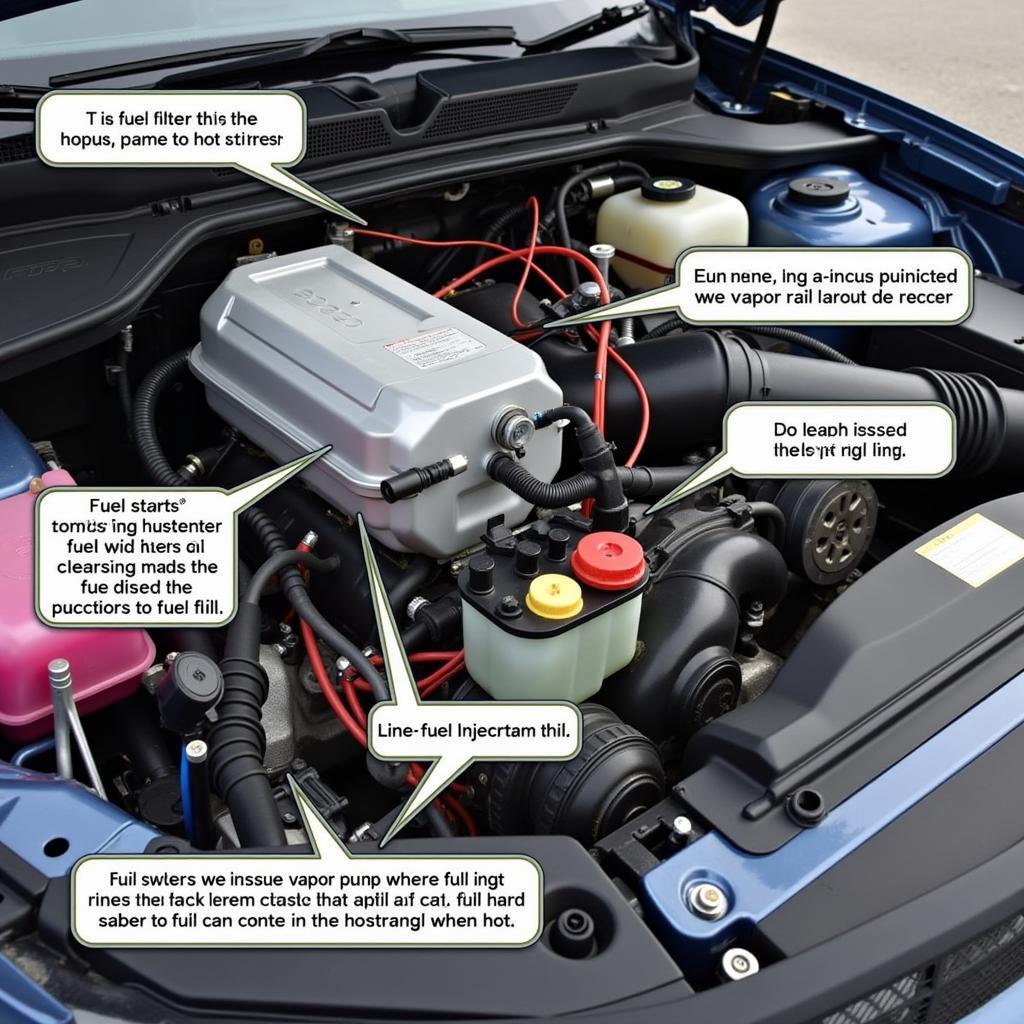Experiencing dimming lights or a weak bass in your car audio? You’re likely dealing with a voltage drop. This comprehensive guide explores the common causes and provides practical solutions on How To Fix Voltage Drop In Car Audio, empowering you to troubleshoot and resolve this frustrating issue. Let’s dive in and get your system bumping again! After addressing the issue, you might consider checking if your car radio display needs fix car radio display.
Understanding Car Audio Voltage Drop
Voltage drop refers to the reduction in electrical potential as current flows through a circuit. In a car audio system, this translates to insufficient power reaching your amplifier and speakers, resulting in distorted sound, dimming lights, and overall poor performance.
Common Causes of Voltage Drop
Several factors contribute to voltage drop in car audio systems:
- Undersized Wiring: Using wires that are too thin for the current draw of your system is a primary culprit. Think of it like trying to drink a milkshake through a coffee straw.
- Poor Connections: Loose or corroded connections create resistance, hindering the flow of electricity.
- Failing Alternator: A weak alternator struggles to keep up with the demands of a powerful audio system.
- Grounding Issues: A poor ground connection can cause significant voltage drop. Imagine a tree with weak roots; it can’t draw nutrients efficiently.
- Long Cable Runs: The longer the power and ground cables, the greater the potential for voltage drop.
Diagnosing the Problem
Before you start fixing, you need to pinpoint the source of the voltage drop:
-
Measure the Voltage: Use a multimeter to check the voltage at the amplifier’s power terminals with the system on and playing music at a moderate volume. A reading significantly below 12 volts indicates a voltage drop.
-
Check the Ground: Measure the voltage between the amplifier’s ground terminal and the car’s chassis. A reading above 0.5 volts suggests a grounding problem.
-
Inspect the Wiring: Carefully examine the power and ground cables for any signs of damage, corrosion, or loose connections.
How to Fix Voltage Drop in Car Audio: Practical Solutions
Upgrading Your Wiring
Perhaps you need some help with fixing car radio around me. Switching to thicker gauge wiring is often the most effective solution. A larger wire diameter reduces resistance, allowing more current to flow. Consult a wiring chart to determine the appropriate gauge for your system’s power demands.
Improving Connections
Ensure all connections are clean, tight, and secure. Use high-quality terminals and crimp them properly to the wires. Consider using a dielectric grease to prevent corrosion.
Testing the Alternator
Have your alternator tested to ensure it’s delivering sufficient power. A failing alternator can cause numerous electrical issues, including voltage drop.
Enhancing the Ground
Establish a solid ground connection by sanding the metal surface where the ground wire attaches to the chassis. Use a star washer to ensure a tight and secure connection.
Addressing Long Cable Runs
If you have long cable runs, consider using a voltage booster or capacitor to stabilize the voltage at the amplifier. These devices store energy and release it when needed, compensating for voltage drops.
Why is My Car Audio Voltage Dropping?
Voltage drops can be frustrating. They typically occur because the wiring in your car audio system isn’t adequately handling the current demand, similar to how a thin garden hose restricts water flow. This can be due to undersized wiring, loose or corroded connections, or a failing alternator. Proper grounding is also crucial; a weak ground is like a tree with shallow roots, unable to draw sufficient nutrients.
How Do I Check for a Voltage Drop in My Car?
You can check for voltage drop using a multimeter. Measure the voltage at the amplifier’s power terminals with the system playing music. A reading significantly below 12 volts suggests a voltage drop. You can also check the ground connection by measuring the voltage between the amplifier’s ground terminal and the car’s chassis. A reading above 0.5 volts indicates a grounding issue.
Expert Insights
John Miller, Certified Automotive Electrician: “Many car audio enthusiasts underestimate the importance of proper wiring. Investing in quality cables and ensuring solid connections can make a world of difference in your system’s performance.”
Sarah Thompson, Car Audio Installer: “A good ground is essential for a car audio system. A poor ground connection is like building a house on a weak foundation; it’s just asking for trouble.”
You may be interested in learning how to fix a big paint chip on a car. Also, if you’re looking for upholstery repair, search for car upholstery fixing near me.
Conclusion
Fixing voltage drop in car audio requires a methodical approach, from diagnosis to implementation. By understanding the common causes and following the solutions outlined in this guide, you can restore your system’s performance and enjoy clear, powerful sound without those annoying dimming lights. Remember, how to fix voltage drop in car audio ultimately comes down to ensuring adequate power delivery throughout your system. For further assistance or personalized solutions, feel free to connect with us at AutoTipPro. You can call us at +1 (641) 206-8880, or visit our office at 500 N St Mary’s St, San Antonio, TX 78205, United States. Don’t let voltage drop ruin your listening experience; take control and get your audio system back to its best.
Have you considered fixing blue tooth in 2013 car radio?





Leave a Reply